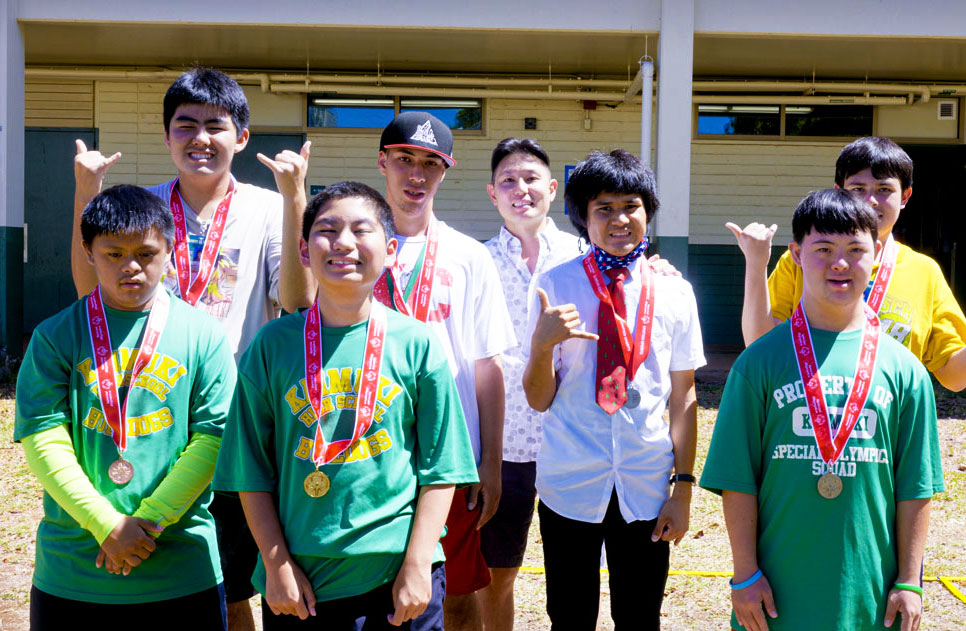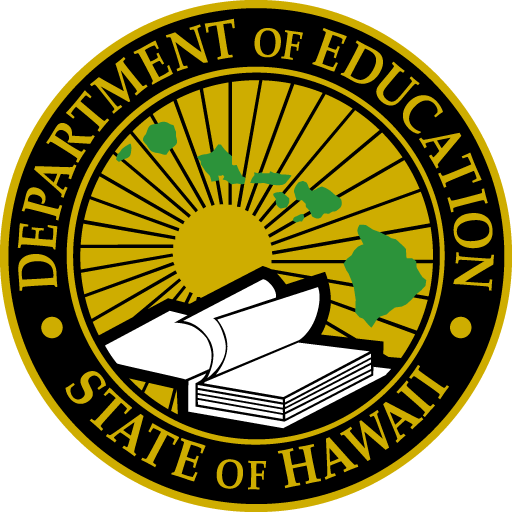The Hawaiʻi State Department of A'oga (HIDOE) provides services to children ages 3 through 21, residing in Hawaiʻi, who are eligible for a'oa'oga fa'apitoa ma auaunaga fa'atatau. Special education is specially designed instruction, related services, and other supplementary aids to meet your child’s unique needs—at no cost to parent(s).
aotelega
Special education refers to a range of services provided your child with disabilities to improve their educational outcomes. It is specially designed instruction to meet the unique needs of your child with disabilities. Special education may include, but is not limited to, academic services, speech-language services, psychological services, physical and occupational therapy, counseling services, and parent education. In addition, a'oa'oga fa'apitoa services are provided at no cost to parent(s). Find out if A'oa'oga Fa'apitoa Is it for your child? (PDF).
Special education services are made available to any student — ages 3 through 21 — who demonstrates a need for specially designed instruction after an eligibility determination. An evaluation will determine the nature and extent of the student’s needs. Evaluations are separate assessments that may include: academic performance, communication skills, general intelligence, health, vision, hearing, social and emotional status, and motor abilities. If your child is eligible for a'oa'oga fa'apitoa, services are provided through an Individualized A'oga Program (IEP).
The federal Individuals with Disabilities A'oga Improvement Act of 2004 (IDEA) and state regulations require the HIDOE to provide a free appropriate public education (FAPE), which includes a continuum of services for your child who is eligible for a'oa'oga fa'apitoa ma auaunaga fa'atatau.
Iloiloga ma Agavaa
Special education is intended for students who have disabilities that cause difficulty in learning and need specialized instruction.
Evaluation is defined as the procedures used to determine if your child has a disability and the nature and extent of the need for a'oa'oga fa'apitoa and related services. This process helps identify learners who are eligible for a'oa'oga fa'apitoa and related services by determining the presence of a disability and the need for a'oa'oga fa'apitoa services. There are specific timelines that teams must follow for the evaluation process.
Appropriate referrals for a'oa'oga fa'apitoa begins after supportive instructional practices have occurred and the student needs far more than the classroom teacher can provide through general education support. For example, a student who has significant academic and/or behavioral challenges and continues to display a lack of progress despite increasing levels of intervention.
Determination of Disability for A'oa'oga Fa'apitoa
E tatau i 'au ona:
- Faia se iloiloga
- Fa'amae'a le su'ega fa'atolu
- Consider your child’s educational progress and the interaction between the disability
- Determine the educational impact of that disability
- Decide the need for a'oa'oga fa'apitoa
This important distinction highlights that the disability label alone does not prompt a determination of eligibility for a'oa'oga fa'apitoa. In the context of a'oa'oga fa'apitoa eligibility, the disability label has no standing without reference to impaired educational progress as a result of the disability.
Su'ega Tolu La'au
Each prong must be met before the team can determine that if your child is eligible for a'oa'oga fa'apitoa.
- Laasaga 1: Fa'aletonu – E iai se fa'aletonu o lou alo?
- Laasaga 2: Aafiaga leaga – Is the disability adversely affecting your child’s involvement and progress in general education?
- Laasaga 3: Manaomia – Does your child need a'oa'oga fa'apitoa and related services due to their disability?
Individualized A'oga Program
An Individualized A'oga Program (IEP) is a written statement about the educational program for your child with a disability. It serves as a management tool to ensure that your child receives the needed a'oa'oga fa'apitoa and related services. It can also serve as an evaluation tool when used to determine the extent of their progress toward accomplishing projected goals.
O IEP ta'itasi e aofia ai:
- A statement of your child’s present levels of academic achievement and functional performance
- Se faʻamatalaga o sini faʻaletausaga, e aofia ai faʻamoemoega faʻaaoaoga mo taimi pupuu
- A statement of the specific a'oa'oga fa'apitoa and related services to be provided
- The extent that your child will be able to participate in regular educational programs
- O aso fuafuaina mo le amataina o auaunaga ma le umi o le taimi o auaunaga
- Fa'atatau o fa'amoemoega ma fa'asologa o iloiloga ma fa'atulagaga mo le fa'ai'uga, a itiiti mai i tausaga ta'itasi, pe o ausia sini.
Beginning at age 14 (or younger if determined appropriate by the IEP team), the IEP shall include a statement of the transition service needs of your child—under the applicable components of the their IEP—that focuses on their courses of study (such as participation in a vocational educational program).
Amata i tua atu o le IEP muamua e aoga pe a atoa le 16 o lau tama (pe laʻititi pe a faʻamaonia e le IEP au), e tatau ona aofia i le IEP:
- Fa'atatauga fa'atatau i le mae'a o a'oa'oga fa'atatau ile su'esu'ega ole suiga ole tausaga
- O 'au'aunaga fa'aliliu (e aofia ai kosi o su'esu'ega) e mana'omia e fesoasoani ai i le tamaititi a'oga e ausia na sini
- Su'esu'ega tau suiga o tausaga e fa'atatau i mana'oga ta'ito'atasi o lau tama e fa'aaoga e fa'atatau ai sini fa'atatau ile aoga maualuga.
- Amata e le sili atu i le tasi le tausaga a'o le'i o'o lau tama i le matua tele i lalo o le tulafono a le setete, (18 tausaga le matua i Hawai'i), e tatau ona aofia i le latou IEP se fa'amatalaga e fa'apea ua logoina le tamaititi i ana aia tatau i lalo o le Vaega B o le IDEA, pe afai ei ai, o le a tu'uina atu i lau tama pe a aulia le matua o le matua.
O mea nei e tatau ona auai sui auai i se fonotaga a le IEP (PDF):
- A representative of the public agency, other than your child’s teacher, who is qualified to provide, or supervise the provision of, a'oa'oga fa'apitoa
- The child’s teacher
- Tasi po'o matua uma/tagata tausi tulafono
- Lau tama, pe a talafeagai
- O isi tagata i le faitalia a le matua po'o le lala sooupu
Fonotaga IEP
E tatau ona faia fonotaga a le IEP ia le itiiti ifo ile tausaga. Fa'alagolago i mana'oga ma le aga'i i luma o lau tama, o fonotaga e toe iloilo ma toe teuteu e mafai ona fai soo.
E ui o fonotaga a le IEP e masani ona amataina ma fa'atautaia e le a'oga, e talafeagai mo matua ona talosagaina se fonotaga a le IEP pe a e talitonu e le'o lelei le alualu i luma o lau tama pe e te lagona o lo'o i ai se fa'afitauli i le IEP o lo'o iai nei.

E iai se fa'aletonu o la'u tama?
Su'e Tamaiti is HIDOE’s process of identifying, locating and evaluating children and youth who have been identified as or are suspected of having a disability and may need a'oa'oga fa'apitoa and related services. If you suspect your child may have a disability, we are here to help. Aoao atili
